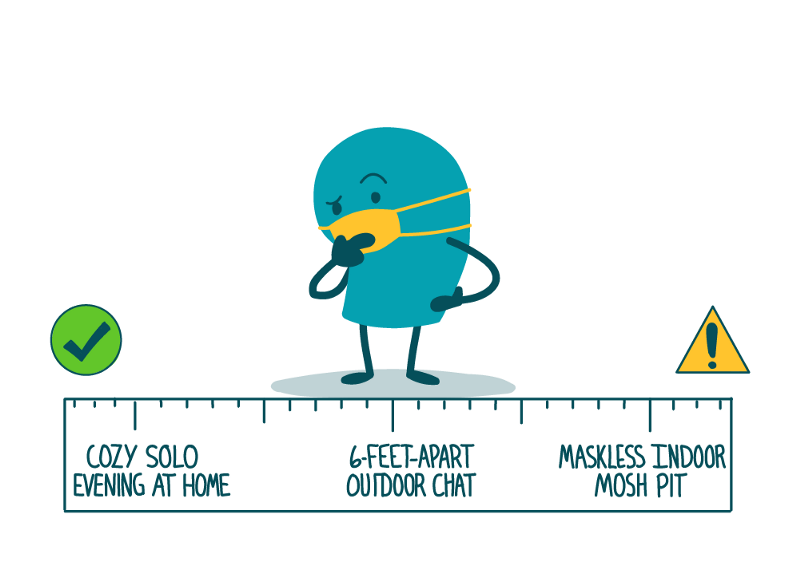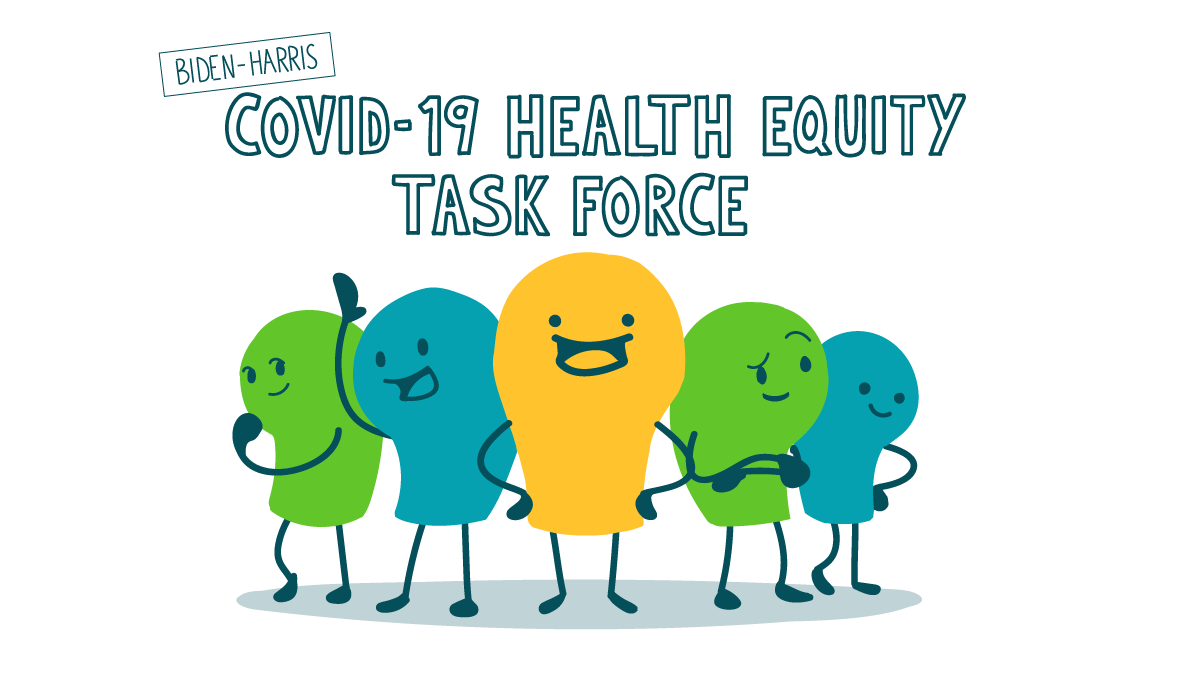
Here at We ❤ Health Literacy Headquarters, we love a super clear, straightforward safety rule. So, like many health communicators, we’ve been shouting the 6-feet-apart social distancing tip from the rooftops. But as experts learn more about how COVID-19 spreads, it’s becoming clear that 6 feet may not be a silver bullet — especially indoors. So this week, we’re looking at ways to bring some nuance to the safe distance conversation.
Try these tips to communicate more clearly about social distancing:
- Make it clear there’s no magic number. The 6-feet rule is a good start, don’t get us wrong. But is there a mystical barrier hanging in the air, taking out pesky respiratory particles that dare to float an inch beyond 6 feet? Alas, no! There is not. So make sure not to drop the “at least” from “at least 6 feet apart.” And if you have the space, you could try something like this to really drive the point home: “Staying at least 6 feet apart is good, but more distance is always better.”
- Treat distance as 1 tool in the toolbox. Distance is key to preventing the spread of COVID — but we also need to talk about other factors, like masks, ventilation, crowding, length of time, and type of activity. So help your readers picture risk on a spectrum. On the safer end, you could give the example of 2 masked people chatting quietly from either side of a neighborhood street. On the wildly risky end, try 50 unmasked people shouting in a small room with no airflow. When people have the full picture, they can better adjust their behavior to stay on the safer side.
- Use secondhand smoke as a helpful analogy. We’ve seen some experts comparing airborne COVID particles to cigarette smoke — and we think that’s pretty clever! Just think: You can get a whiff from 20 feet away, but the closer you are, the stronger the stench. It’s much more noticeable indoors than outdoors. And passing a smoker briefly on the sidewalk is a lot less risky than spending hours sitting next to someone who’s smoking. So if you’re looking for a comparison to help your readers understand why these variables matter, consider making the connection to secondhand smoke.
Now, dear readers, you might be wondering: Isn’t it confusing to tell people that 6 feet isn’t enough when so many reopening plans rely on this distance guideline? Yep, that’s a valid concern. But the reality of this (constantly evolving) public health crisis means that people may need more details to make truly informed decisions about COVID. And that’s something we can help with.
The bottom line: Help people go beyond the 6-feet rule to slow the spread of COVID-19.
Browse recent posts


